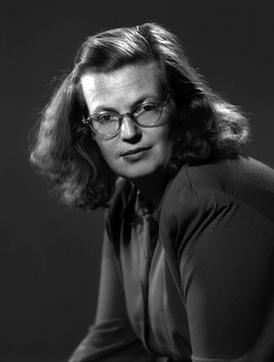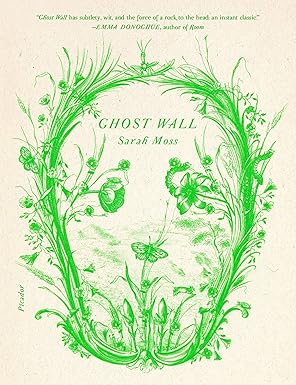The Author
 |
| image source: Wikipedia |
Author Overview
Shirley Jackson (1916–1965) was an American writer best known for her unsettling, psychologically rich stories that explore the dark edges of everyday life. Although she wrote novels, memoirs, and humorous essays, she is most celebrated for her mastery of the modern Gothic short story—a genre in which ordinary settings gradually reveal disturbing truths.
Early Life & Influences
Jackson was born in San Francisco and grew up on the West Coast before moving to the East Coast for university. She had a complicated relationship with her family, especially her mother, who often criticized her. Many scholars see echoes of this tension in her stories about fractured families, vulnerable daughters, and individuals who feel misunderstood or alienated.
Writing Career
Jackson gained wide attention in 1948 with “The Lottery,” a short story published in The New Yorker that shocked readers with its calm description of sudden brutality in a small town. The enormous reaction solidified her reputation as a writer capable of exposing the darker side of human nature—and of society as a whole.
Over her career, she wrote:
● Short stories that blend realism with psychological horror
● Novels, including The Haunting of Hill House and We Have Always Lived in the Castle, now considered classics
● Essays and memoirs, which reveal a funnier, more domestic side of her personality
This contrast between her chilling fiction and witty personal essays surprised many readers and shows her range as an author.
Themes in Her Work
Jackson’s writing often explores:
● Identity and self-perception
● Family dynamics and social pressure
● The gap between appearance and reality
● The hidden cruelty of everyday life
She had a talent for taking ordinary situations—family life, small towns, social expectations—and revealing the deeper psychological forces underneath.
Style
Her style is typically:
● Calm, controlled, and subtle, even when disturbing things happen
● Character-driven, focusing on mental and emotional states
● Ambiguous, leaving space for interpretation
● Rich in irony, with understated humor or tension
This understated approach makes her stories powerful: she rarely tells readers how to feel, allowing the psychological unease to grow quietly.
Relevance to “Louisa, Please Come Home”
This short story is a good example of Jackson’s interest in:
● How fragile identity can be
● The complexity of family relationships
● How people can fail to see what is directly in front of them
● The emotional cost of independence and escape
It also shows her classic blend of the ordinary and the unsettling, where a simple situation (a girl running away) turns into something deeper and more disturbing.
YouTube Channel- Books 'n' Cats - How Shirley Jackson exposed the horror of home life
The Book
 |
| image: OpenAI |
Louisa, Please Come Home is a haunting short story by Shirley Jackson, first published in 1960. It follows Louisa Tether, a young woman who decides to leave her family on the day before her sister’s wedding. Without drama or explanation, she slips away, moves to another city, and carefully constructs a new identity. For three years she lives quietly and comfortably, certain that she has escaped the pressures and expectations of home. Her life only becomes complicated when she listens to a radio program discussing her disappearance, a moment of curiosity that triggers her eventual return.
The story reaches its unsettling climax when Louisa presents herself to her family—only to discover that no one believes she is who she claims to be. Jackson brilliantly exposes the fragility of identity and the disturbing possibility that the people closest to us may fail to truly “see” us.
Upon publication, the story was highly praised and won the Edgar Allan Poe Award for Best Short Story in 1961. Its impact lay in the way it challenged American notions of family, belonging, and recognition. With this piece, Jackson reaffirmed her mastery in transforming ordinary situations into psychological nightmares, solidifying her reputation as a sharp observer of social unease.






